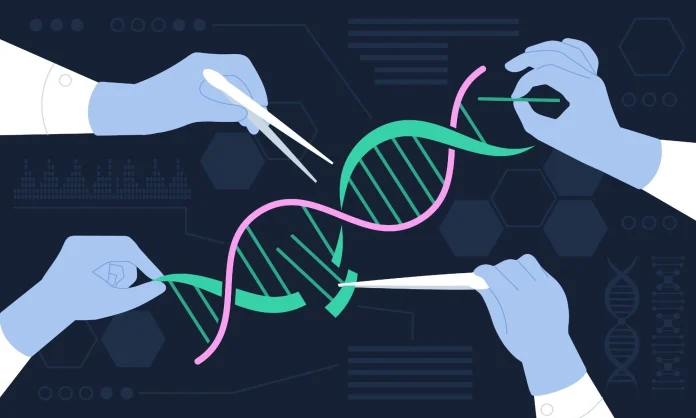A nine-month-old boy from the United States became the world's first patient to introduce individual genet therapy using CRISPR-Cas9 molecular scissors technology. This revolutionary technique, which received the Nobel Prize in Chemistry in 2020, was used to treat a rare genetic metabolic disease that threatened the life of the baby.
In Kay, Jay Maldun was diagnosed with carbamoylphosphatsyntase deficiency 1 (CPS1) - a genetic disease that leads to impaired liver function and does not allow the body to excrete toxic metabolism products. Without treatment, the disease had two variants of development: liver transplantation or death.
The boy's mother Nicole Maldun said that finding information about CPS1 on the Internet gives horrible predictions: "Either death or liver transplant." Doctors offered families experimental treatment with CRISPR-CAS9, which became the only chance for them.
Father Kyle Maldun recalls: "Our son was seriously ill. We had a choice: either a liver transplant, or a treatment that no one was made before ... It was an extremely difficult decision." Despite the fears, the couple agreed to therapy.
In February, the baby was given the first infusion of the drug, and later two. The genetician Rebecca Arsens-Niclas explained that this treatment was created exclusively for Kay Jay, adapted to his unique genetic mutations. With the help of molecular scissors CRISPR-CAS9, which fall into the nucleus of liver cells, doctors try to correct the defective gene.
According to doctors, the results of therapy are currently promising: the boy can now consume more protein and requires much less medicines. At the same time, experts emphasize that long -term observation is required to fully evaluate the safety and effectiveness of treatment.
Medical experts hope that this breakthrough in genetic therapy will allow Kay Jay to live with or without medication. In addition, this technology can be the basis for the creation of individualized therapy for other patients with rare genetic diseases.


